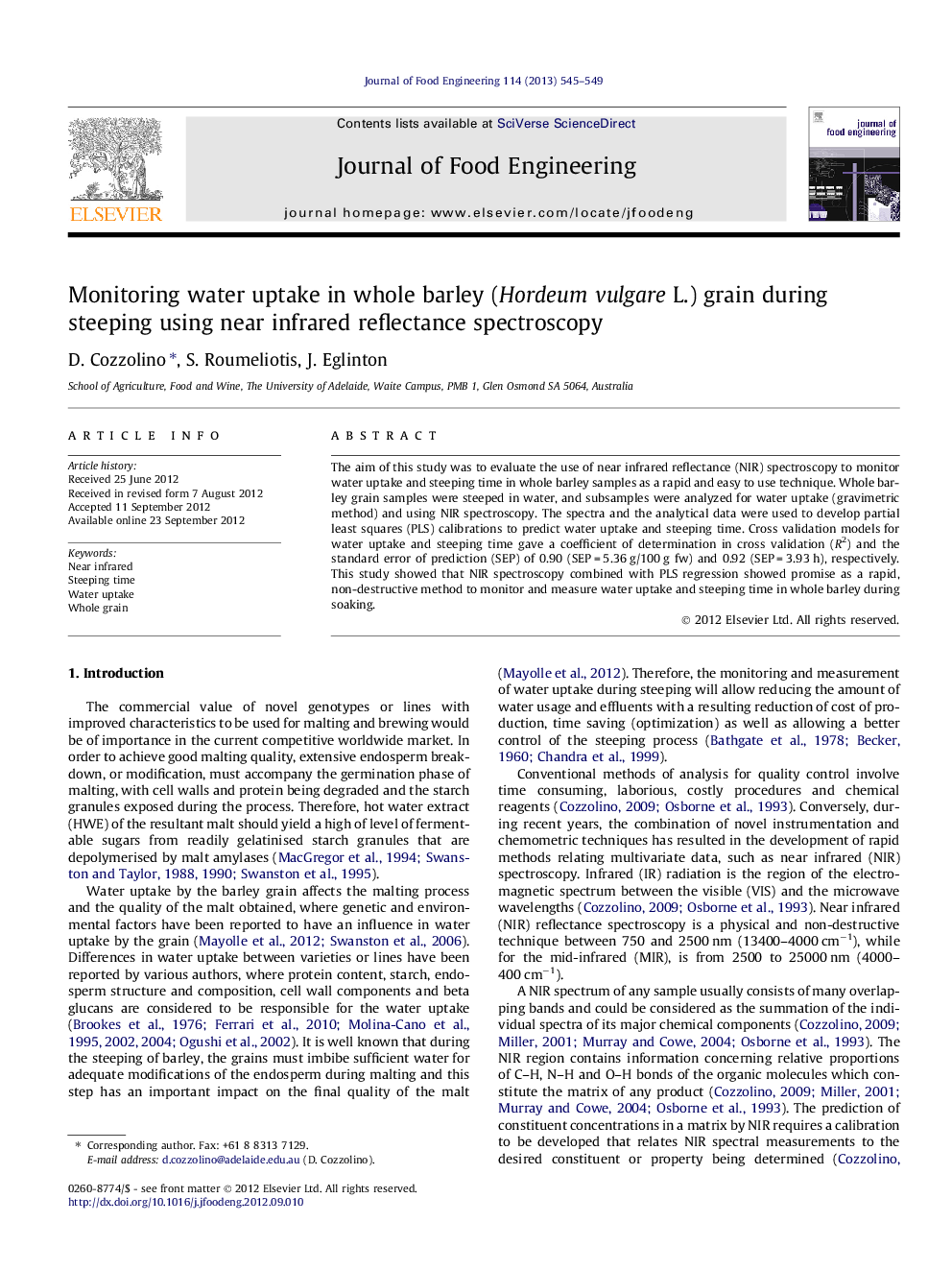| Article ID | Journal | Published Year | Pages | File Type |
|---|---|---|---|---|
| 223624 | Journal of Food Engineering | 2013 | 5 Pages |
The aim of this study was to evaluate the use of near infrared reflectance (NIR) spectroscopy to monitor water uptake and steeping time in whole barley samples as a rapid and easy to use technique. Whole barley grain samples were steeped in water, and subsamples were analyzed for water uptake (gravimetric method) and using NIR spectroscopy. The spectra and the analytical data were used to develop partial least squares (PLS) calibrations to predict water uptake and steeping time. Cross validation models for water uptake and steeping time gave a coefficient of determination in cross validation (R2) and the standard error of prediction (SEP) of 0.90 (SEP = 5.36 g/100 g fw) and 0.92 (SEP = 3.93 h), respectively. This study showed that NIR spectroscopy combined with PLS regression showed promise as a rapid, non-destructive method to monitor and measure water uptake and steeping time in whole barley during soaking.
► The use of near infrared to monitor water uptake by barley grain during steeping was evaluated. ► Good calibration models were obtained to predict water uptake in whole barley grain. ► The method proposed has the potential to be a rapid, non-destructive method to monitor barley during steeping.
